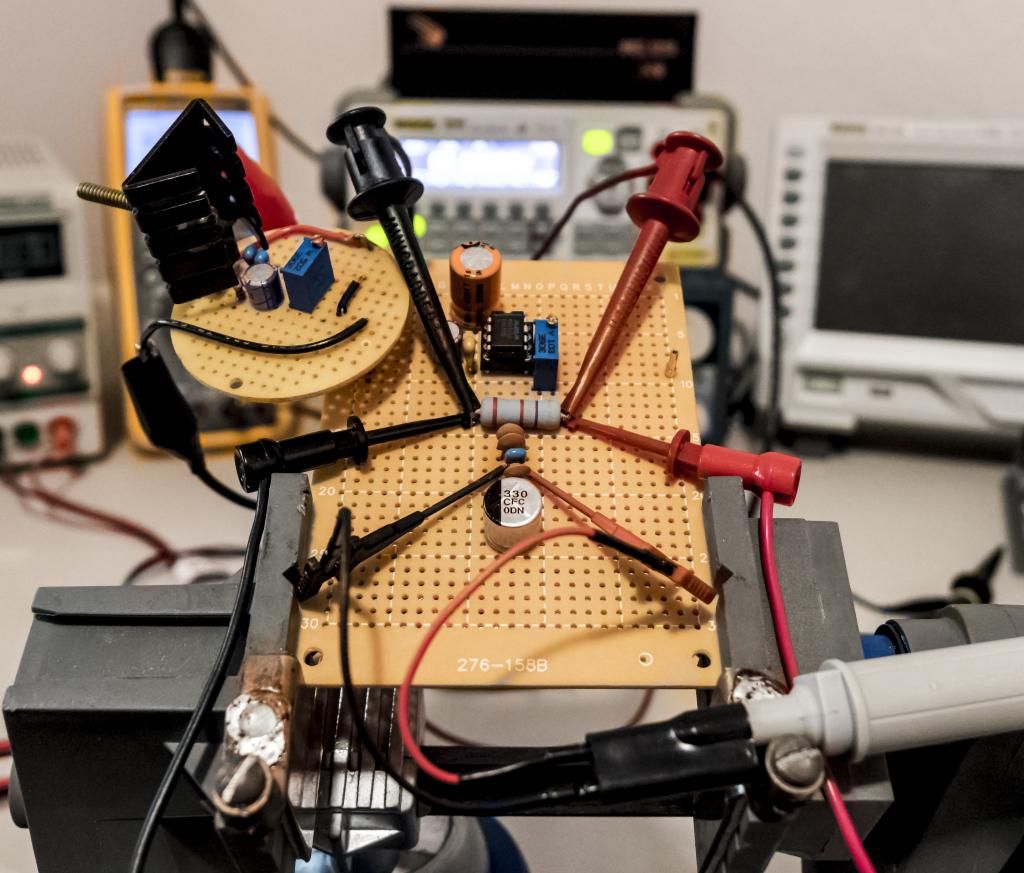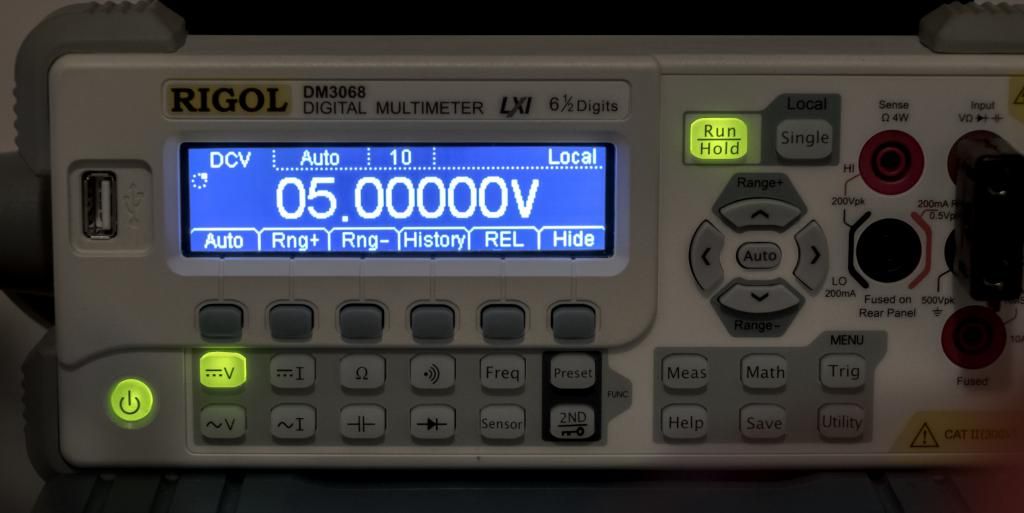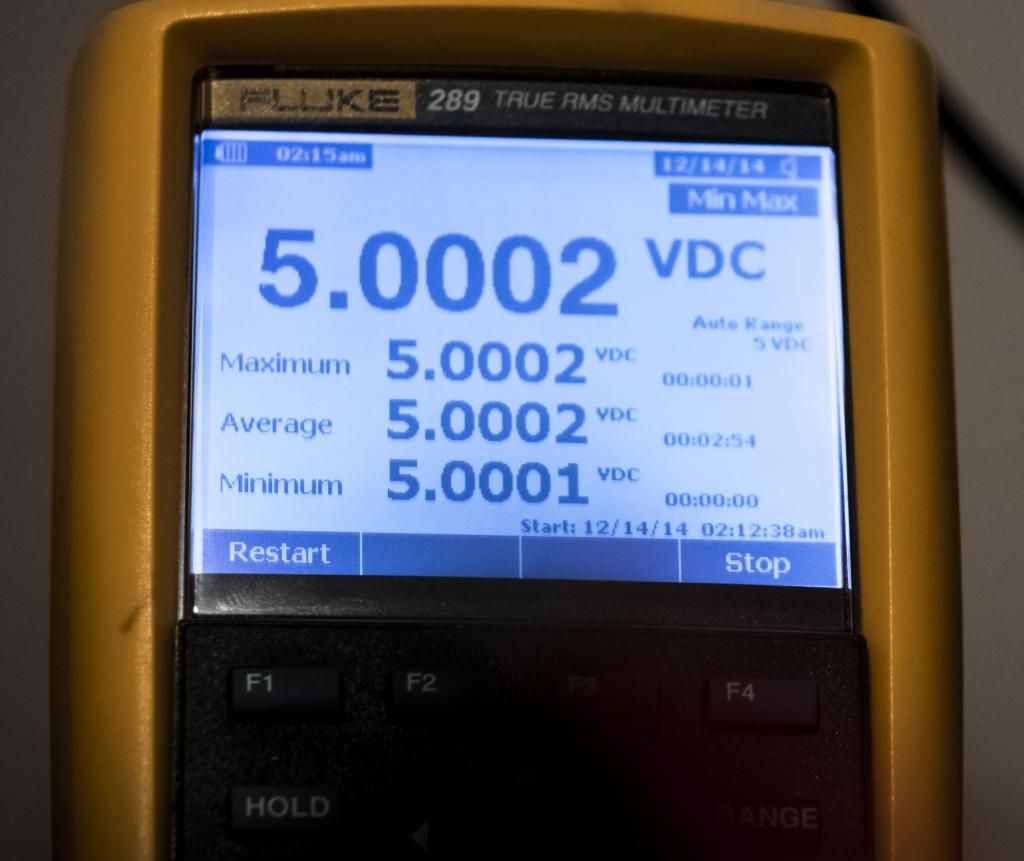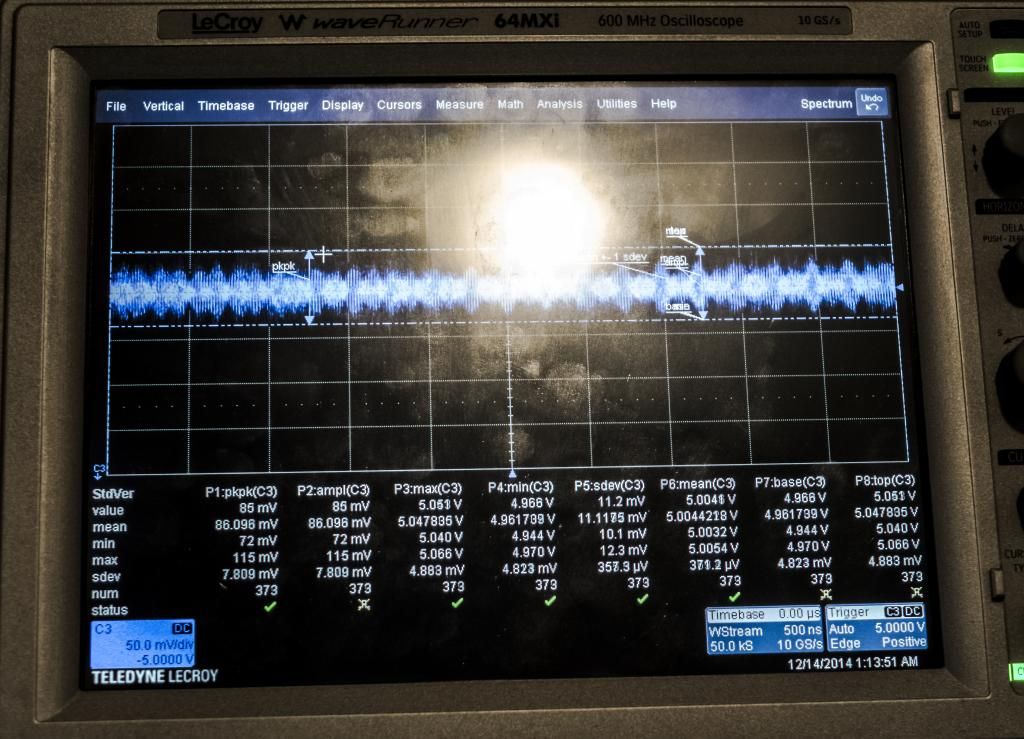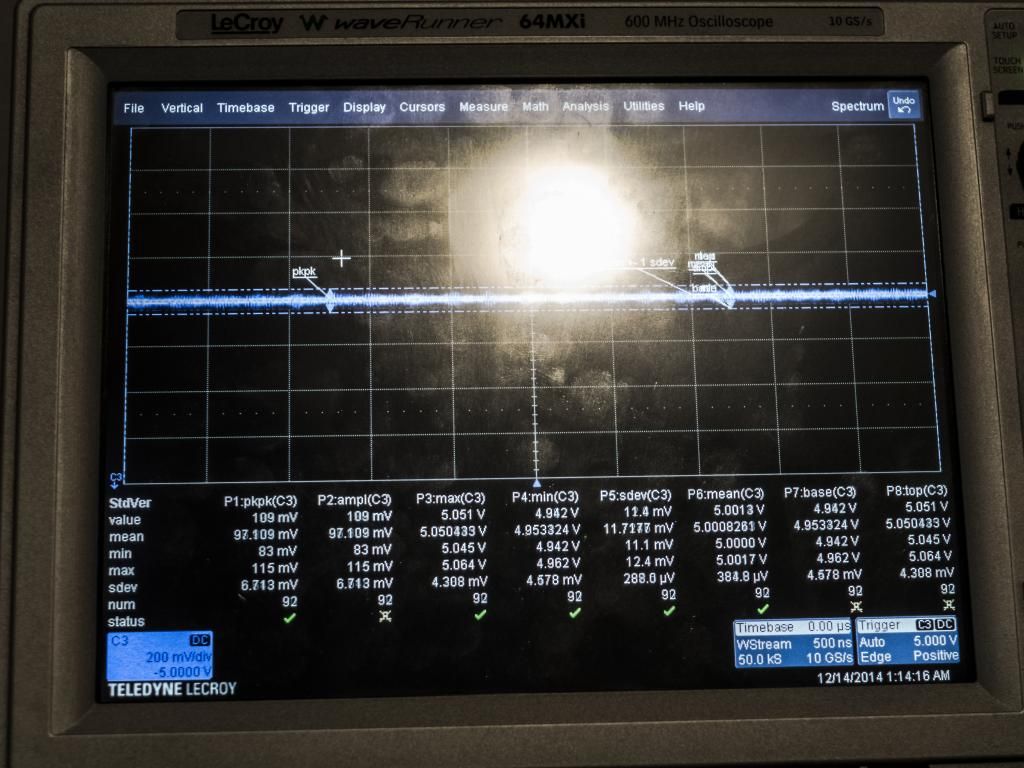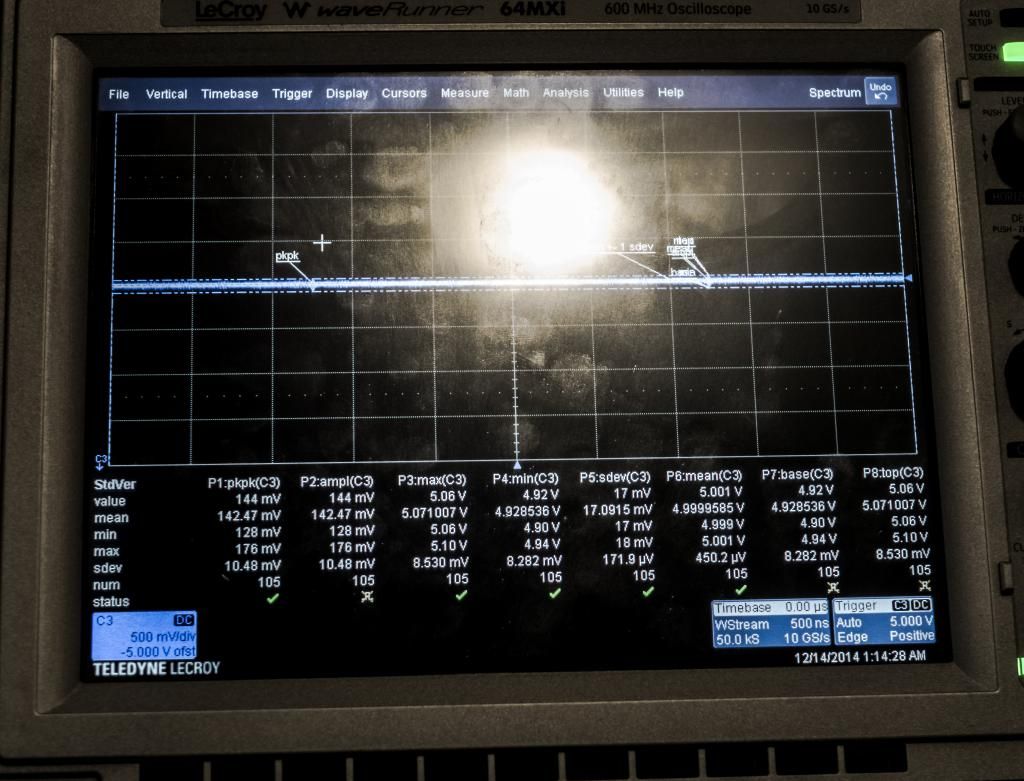As you can see the accuracy of the scope drifts as the vertical scale becomes wider.....
That is what the term "full scale" means.....the accuracy has very little to do with total DC offset....
The test is a stabilized voltage reference @ 5v (Maxim MAX6350 buried zener) . As you can see it was calibrated using the dm3068.... (0.5ppm/°C, ±0.02% initial accuracy)
The DMM's are NOT as accurate as the scope, despite their LONGER integration times. Because they are reading DC, and not all of the signal energy is DC. The AC component can't really be read by the DMM's...even in AC mode, because the max bandwidth of the AC range on the DM3068 is 200Hz.....and it's unknown on the Fluke 289, because they don't state it (and I can't be bothered to actually measure and extrapolate.....that's why i have a scope).
The important part of the measurements, on the scope, to pay attention is the MEAN. The mean is as close to the DMM's reading as the scope can get....unless I turn on input filtering and boxcar averaging.....and that would defeat the purpose of the scope....I don't want to see pretty waveforms and filter energetic peaks.....especially if I am using this as a true reference signal, or if this was a critical i/o chain. I want to see the overshooting energy.....that is the point. I want to know if the peak above mean, or the trough below mean is outside of the tolerance for my application.
There is a purposeful fault in the output of this voltage reference. I built this circuit specifically to illustrate this problem. The DMM shows it as a nearly perfect V-ref for something like a 16 bit A/D. The scope shows it's clearly problematic and needs some better output filtering.
The fault is in the capacitance. I keep showing these capacitance faults, because they illustrate my point about the need for bandwidth in an oscilloscope.
The voltage reference is being fed by a linear DC-DC converter (ON semi LM350). I isolated the circuits, so you guys could see what is going on. The DC-DC is on the round disc PCB. (Line Regulation 0.005%/V.....0.3% nominal stability/1000hrs.)
The voltage ref has a 4.7k ballast/load....which is a 1% 2watt resistor. I chose this because of it's high stability. It is the v-sense resistor for the DMM's. The scope probe (ap020) is attached to the lowest value output cap (the proper way to measure into the scope).
